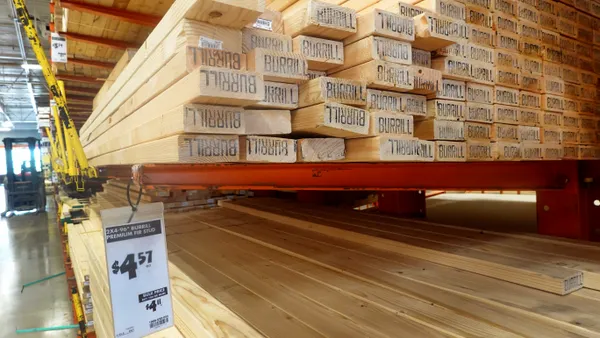Dive Brief:
- The National Association of Home Builders testified before Congress Tuesday in an attempt to persuade legislators to stop implementation of the new Occupational Safety and Health Administration silica safety standard.
- NAHB Chairman Ed Brady told the House Education and Workforce Committee’s Subcommittee on Workforce Protections that the new silica rule is both economically and technologically infeasible and could cost the construction industry as much as $4.9 billion per year.
- In response to the hearing, the International Union of Bricklayers and Allied Craftworkers (BAC) issued a statement praising the new rule and disputing Brady’s claims that the new standard is difficult to execute. The BAC also said the hearing itself was "nothing more than a thinly veiled attempt to undermine this much needed regulatory reform."
Dive Insight:
OSHA’s new standard reduces the permissible exposure limits to 50 micrograms per cubic meter of air over an average of eight hours and requires employers to use engineering controls like water or ventilation and to provide personal protective equipment like respirators. Employers are also required to develop a written silica exposure plan, deliver training, and, in certain situations, furnish medical exams and monitoring.
The construction industry has been at odds since OSHA announced the finalization of the new silica standard and its intention to implement the rule in June. In an effort to consolidate the opposition, the NAHB and approximately 25 other trade associations formed the Construction Industry Safety Coalition (CISC), which has spearheaded the campaign against the rule.
While the NAHB and CISC have maintained that the rule presents disruptive operational and economic burdens, the BAC, echoing the views of other proponents, said the technology to implement the tougher standard is readily available and denied claims that it would subject companies to excessive costs. In its statement, the BAC added that "Congress would do well to remember" that the electorate expects its representatives to protect worker health.
Earlier this month, eight construction industry groups filed a petition with the U.S. Court of Appeals for the Fifth Circuit requesting a review of the new silica rule. According to the Associated Builders and Contractors, the petitioners claim that OSHA did not fully consider the evidence they provided during rulemaking sessions and has a "fundamental misunderstanding of the real world of construction."












